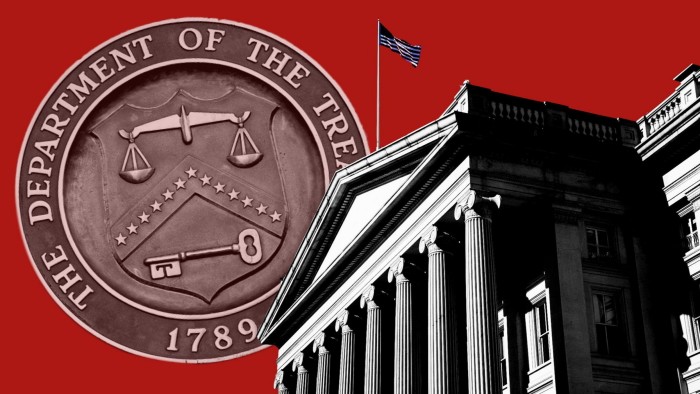Unlock the White House Watch newsletter for free
Your guide to what Trump’s second term means for Washington, business and the world
US Treasuries and stock futures fell on Monday as the stripping of the country’s triple-A credit rating and progress on President Donald Trump’s massive tax and budget bill fuelled concerns about the government’s mounting debt burden.
Yields on 30-year US Treasuries rose as much as 0.11 percentage points to 5.01 per cent on Monday, their highest level since April 9, when Trump’s tariffs triggered a global sell-off of US assets. Yields move inversely to prices.
US equity futures for the S&P 500 and the Nasdaq fell 1.1 per cent and 1.4 per cent respectively. The US dollar slid 0.7 per cent against a basket of its peers.
The rise in bond yields comes after Moody’s downgraded the US’s triple-A sovereign credit rating on Friday evening, warning about rising levels of government debt and a widening budget deficit. On Sunday evening, a key congressional budget committee approved a tax bill from the new administration expected to further worsen the deficit.
While the downgrade is viewed by analysts as unlikely to fuel forced selling of US Treasuries by big investors, it will add to bondholders’ concerns over the sustainability of the country’s debt burden.
“It’s another warning for a US administration already on bond vigilante alert,” said Pooja Kumra at TD Securities.
Nicolas Trindade, a fund manager at Axa’s asset management arm, said the downgrade was a “stark reminder that the US should not take for granted its ‘exorbitant privilege’ that enabled it to issue debt at a relatively lower cost despite a very high fiscal deficit”.
On Friday, five Republican lawmakers from the house budget committee had voted against the tax bill, stalling its progress. On Sunday, the package narrowly passed the committee vote.
Trump had put pressure on his party’s lawmakers to vote in favour of the bill. “Republicans MUST UNITE behind, ‘THE ONE, BIG BEAUTIFUL BILL!’” he wrote on social media on Friday. “We don’t need “GRANDSTANDERS” in the Republican Party. STOP TALKING, AND GET IT DONE!”
The legislation, which includes hundreds of billions of dollars in new tax cuts that are not offset by changes in spending, is expected to increase the federal deficit, which stood at 6.4 per cent of GDP in 2024 — well above levels economists view as sustainable in the longer term.
“The bill is helping drive up the long end,” said Subadra Rajappa, head of US rates strategy at Société Générale.
A bigger deficit means more Treasuries issuance. Some investors moved to sell bonds in anticipation of extra supply and the potential inflationary impacts of the tax cuts.
The US has long been able to run large fiscal deficits because of its economic strength but also because of the structural role that the dollar and US government debt play in the global financial system. But analysts have asked questions over the haven status of US assets as erratic policymaking from Washington unsettles big global investors.
The administration believes the tax cuts will boost growth, raise revenues and lower the US’s deficit. But the Committee for a Responsible Federal Budget projects the tax bill could add up to $5.2tn to the national debt over 10 years.
“The direct driver [of the bonds fall] is the Moody’s downgrade,” said Wei Li, head of multi-asset investments for China at BNP Paribas.
“[But] there are other more fundamental reasons to drive yields up . . . there’s still a lot of uncertainties around tariffs and inflation.”

